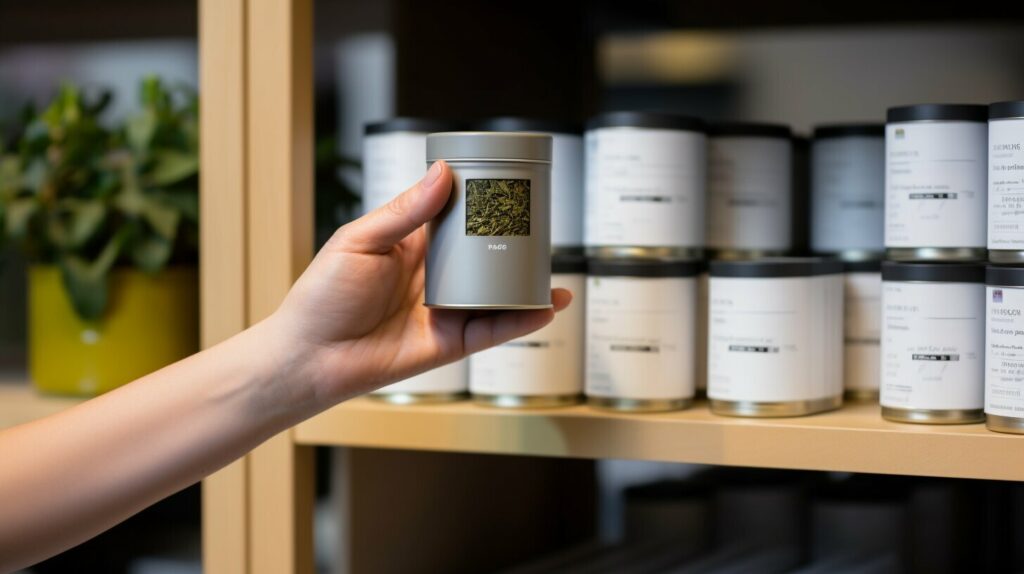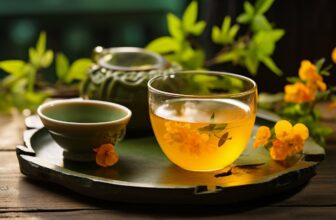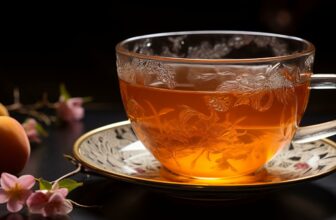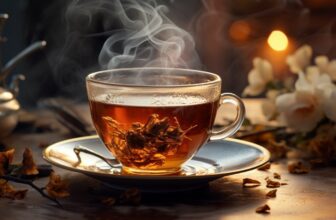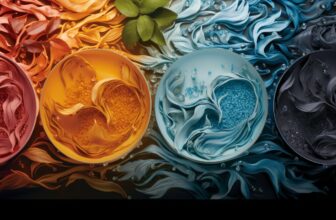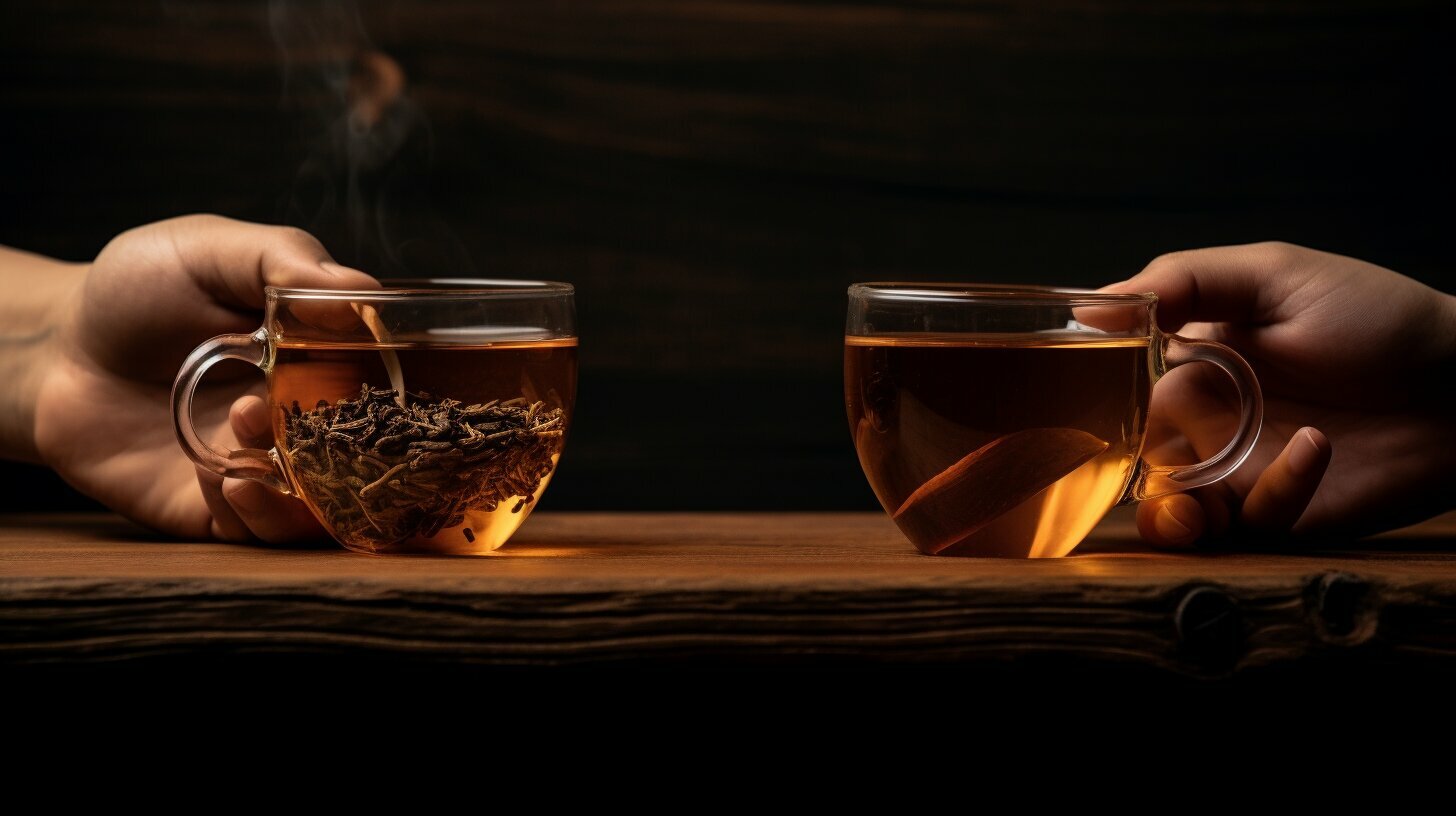
When it comes to tea, there are endless varieties to explore and enjoy. Two popular options that often cause confusion are oolong tea and black tea. While they may seem similar at first glance, there are distinct differences that set them apart.
Oolong tea falls in between black tea and green tea in terms of oxidation levels. This means that it can have characteristics of both, depending on the processing style of the tea master. On the other hand, black tea is fully oxidized, resulting in a dark color and a strong malty aroma. Green tea, in contrast, is minimally oxidized, retaining its green leaf color and fresh flavor.
The oxidation levels of oolong tea can range from 8% to 80%, allowing it to lean towards either the fresh green tea or the malty black tea side of the spectrum. Additionally, the shape of oolong teas can vary as well, with traditional techniques like rolling, twisting, or curling altering the appearance, color, and aroma of the leaves.
Originating in China and Taiwan, oolong teas are grown in high mountainous regions, resulting in Chinese oolongs, while Taiwanese oolongs tend to have a lighter oxidation. However, oolong teas are also made in other countries like India, Sri Lanka, Japan, Thailand, and New Zealand, each with their unique variations.
Key Takeaways:
- Oolong tea falls between black and green tea in terms of oxidation levels, resulting in a unique flavor profile.
- Black tea is fully oxidized, while green tea is minimally oxidized.
- The oxidation levels of oolong tea can vary, offering a range of flavor profiles.
- Oolong teas come in different shapes and appearances due to traditional processing techniques.
- Aside from China and Taiwan, oolong teas are made in various countries, each with their own distinct varieties.
How Oolong Tea is Made
Oolong tea, with its unique flavor profile, undergoes a meticulous process involving several key steps. Understanding the process behind the production of oolong tea can deepen our appreciation for this exquisite beverage.
1. Withering
The first step in making oolong tea is withering. Freshly picked tea leaves are bruised and then laid out to dry in the sun. This process allows the leaves to lose moisture and begin the natural oxidation process.
2. Rolling
After withering, the tea leaves undergo light rolling, which further bruises the leaves and exposes them to oxygen. This rolling process is essential for initiating and controlling oxidation, which contributes to the unique flavor and appearance of oolong tea.
3. Oxidizing
Oxidation is a crucial step in oolong tea production, as it determines the level of oxidation and, consequently, the flavor profile of the tea. The leaves are left to rest and oxidize in controlled environments, allowing them to develop the desired flavors and aromas.
4. Roasting and Drying
Once the desired level of oxidation is achieved, the leaves are roasted to halt the oxidation process and add complexity to the flavor. Roasting also helps to enhance the aroma and texture of oolong tea. After roasting, the leaves are given a final rolling and drying to complete the tea-making process.
The careful execution of these steps ensures that oolong tea retains its unique taste and character. From withering and rolling to oxidizing and roasting, each stage plays a crucial role in creating a remarkable cup of oolong tea.
Tasting Oolong Tea
When it comes to oolong tea, its taste is a delightful journey of flavors that can vary based on the level of oxidation. The range of taste profiles is vast, offering tea enthusiasts a diverse and exciting experience. Oolong tea can be light and floral, reminiscent of fresh spring blossoms, or it can be full-bodied and malty, with notes of caramel or honey. Each sip unveils a unique combination of flavors that is sure to captivate the palate.
Not only does oolong tea offer a wide range of taste experiences, but it also comes in a variety of colors when brewed. The color of the tea can range from a vibrant green to a shimmering golden hue or even a rich amber brown. The visual appeal of oolong tea adds to the overall sensory experience, making each cup a feast for the eyes as well as the taste buds.
Oolong tea is highly regarded in tea competitions held across Asian countries. These competitions celebrate the craftsmanship of tea producers and honor the dedication and skill that goes into creating exceptional oolong teas. Judges evaluate the shape, appearance, aroma, and taste of the teas, ensuring that only the finest selections are recognized. The competitive nature of these events highlights the importance of taste and quality in the world of oolong tea.
For those conscious of their caffeine intake, oolong tea falls between black tea and green tea in terms of caffeine content. While it contains less caffeine than black tea, it typically has more caffeine than green tea. However, it is important to note that the actual caffeine content can vary depending on the specific cultivation and processing of the tea. The caffeine in oolong tea provides a gentle energy boost without the jitters often associated with coffee.
| Color | Taste Profile |
|---|---|
| Green | Light, floral |
| Golden | Fruity, honey-like |
| Brown | Malty, caramel notes |
“Oolong tea offers a delightful journey of flavors, with taste profiles ranging from light and floral to full-bodied and malty.”
Summary
- Oolong tea offers a wide range of taste profiles, from light and floral to full-bodied and malty.
- The brewed color of oolong tea can vary from green to golden to brown, adding to the visual appeal.
- Tea competitions celebrate the craftsmanship of oolong tea producers and recognize the dedication that goes into creating exceptional teas.
- The caffeine content in oolong tea falls between black tea and green tea, providing a gentle energy boost.
Buying and Storing Oolong Tea
When it comes to purchasing oolong tea, it’s important to choose a trusted and reputable company that provides detailed information about the oxidation levels of the tea. The degree of oxidation greatly affects the flavor and aroma of the tea, so knowing this information can help you select the right oolong tea based on your preferences. Whether you prefer a lighter, more green tea-like oolong or a darker, more robust black tea-like oolong, understanding the oxidation levels will guide your purchasing decision.
Once you have your oolong tea, proper storage is crucial to maintain its freshness and quality. To ensure optimal shelf stability, store your oolong tea in an opaque, airtight container. This will protect the tea from exposure to light and moisture, which can compromise its flavor and aroma. It’s also important to keep your oolong tea in a cool and dark place, away from strong odors and other beverages like coffee that can taint the tea’s delicate flavors.
Tea vendors can provide valuable guidance on how to store oolong tea and maximize its shelf life. By following their recommendations and taking proper care of your oolong tea, you’ll be able to enjoy its exquisite taste and aroma for a longer period of time.
| Buying Oolong Tea | Storing Oolong Tea |
|---|---|
| Choose a reputable company that provides oxidation level information | Store in an opaque, airtight container |
| Consider your desired oxidation level and flavor profile | Keep in a cool, dark place away from light and moisture |
| Ask for recommendations from tea vendors | Avoid strong odors and proximity to coffee or other beverages |
Conclusion
In conclusion, oolong tea holds a unique position between black tea and green tea, showcasing distinct characteristics that make it a favorite among tea enthusiasts.
The processing techniques of withering, rolling, oxidizing, roasting, and drying contribute to the intricate taste profile of oolong tea, resulting in a wide variety of flavors and aromas.
Oolong tea offers a delightful range of taste experiences, from light and floral to full-bodied and malty. Its color can range from green to golden to brown, making it visually appealing as well.
Understanding the differences between oolong and black tea allows tea lovers to appreciate the diverse world of tea and explore the myriad benefits and flavor profiles that oolong tea has to offer.
FAQ
What is the difference between oolong and black tea?
Oolong tea falls in between black tea and green tea in terms of oxidation levels. Black tea is fully oxidized, resulting in a dark color and strong malty aroma, while oolong tea can lean towards a fresh green tea or a malty black tea depending on the oxidation level.
How is oolong tea made?
Oolong tea goes through a series of processing steps, including withering, cooling, rolling, oxidizing, roasting, and drying, to achieve its unique flavor profile.
What does oolong tea taste like?
Oolong tea offers a wide range of flavors, depending on the level of oxidation. It can be light and floral or full-bodied and malty. The color of the brewed tea can vary from green to golden to brown.
How should I buy and store oolong tea?
When purchasing oolong tea, it is important to buy from a reputable company that provides information about the oxidation levels of the tea. Proper storage includes placing the tea in an opaque airtight container in a cool, dark place away from light, moisture, and coffee.
Source Links
- https://www.teatulia.com/tea-varieties/what-is-oolong-tea.htm
- https://twinings.co.uk/blogs/news/oolong-tea-the-black-dragon
- https://pathofcha.com/blogs/all-about-tea/tea-color-and-what-it-says-about-your-tea


